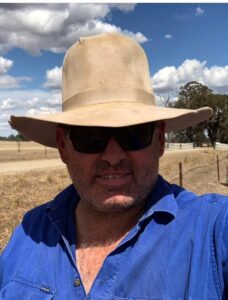Contributor: Andrew Freshwater, Clear Creek Pastoral
There’s a few rumblings as to Dorper based composite sheep in Australia – whether they be Ultra Whites, Aussie Whites, Kojaks, and the list goes on.
I’ve heard a few say: ‘How dare people ruin the breed purity of Dorpers!’ – and have heard claims of inferior production from these composite breeding businesses and systems which are proliferating in Australia.

It makes me wonder what people thought back in the late 1920’s and through the 1930’s when the South African Department of Agriculture had the audacity to combine two breeds and come up with the name ‘Dorper’. How dare they, and how fortunate are we they did!
Crossbreeding and composite breeding are a natural progression for sheep breeders with an eye on production and flock efficiency, and a desire to utilise hybrid vigour and heterosis - in what Dr Keith Gregory at the Meat Animal Research Centre in the US notably called ‘The cattleman's only free lunch’. Undoubtedly, if Dr Gregory was researching the elevated production levels from sheep instead of cattle he would no doubt have been excited at the ‘sheepman's only free lunch’ and quite possibly celebrated with a lamb BBQ.
With the changes to the Australian sheep industry due to COVID-19 – such as a shortage of shearers, a wool market that’s shown increased volatility and an ever resilient sheep meat market – now more than ever is the time Dorper breeders should be forward thinking and encourage innovations.
Much like the Angus breed in cattle as a base breed for many herds and an anchor for multiple composite and crossbreeding systems across a variety of environments, the Dorper has the ability to make its mark on the Australian sheep industry as the base breed of choice.
The sheep of the future.
Back in 2018, Dr Mark Ferguson from Nextgen Agri spoke of the ‘sheep of the future’ and encouraged us all to adapt or be disrupted.
The consumer is king, and they will be increasingly focussed on health, wellness, social impact, safety and experience for the products which they are consuming.
Dr Ferguson also believes that the $10/kg lamb will come with evolving drivers and that getting these drivers right within our breeding programs is paramount to ongoing success.
Can this be done with only using one breed of sheep, or does it make more sense to combine the genes of different breeds to fast track and deliver these profit drivers?
Intramuscular fat (IMF) is a real driver of consumer satisfaction, along with associated positive attributes in the ewe flock – so it is really important to not only aim for increased IMF in our ewe flocks, but to actively introduce the genes that can produce these animals. When IMF is combined with ShearForce measurements we can begin to move past being commodity producers of sheep meat and start moving towards producers of high-end niche food.
The cost of production, time spent of animal maintenance and chemicals used are all enormous drivers in the sheep breeding system of the future. Producing high growth, quality lambs that don’t need to be grain fed to meet specifications is something that surely will lower the costs to many businesses. Consumers too are looking at grain feeding of lamb and its detrimental effect on the Omega 3 levels of sheep meat.

Lambs finished on grass show consistently around 25% more Omega 3 levels than grain fed lamb – this is an attribute we need to embrace and breed towards if our consumer base is desiring healthier food.
Meat and Livestock Australia agrees with this viewpoint and have found the top five costs are all attributed to genetics (for example, lamb mortality and parasites). It therefore makes enormous sense for genetic and performance recording to be at the heart of every sheep breeding business in Australia.
Data is the driver of profitable sheep farming, and definitely an area that the Dorper as a breed needs to get serious about if it is to be the choice of forward-thinking sheep businesses. The typing system is a ridiculous waste of time that has led to zero genetic gains and the use of terms like ‘wet coated’ to describe sheep is a giant leap backwards – both of which can’t be taken seriously and are holding the breed back.
In a time when Artificial Intelligence, Facial Recognition, Genomic Breeding Values, Electronic individual animal management and increased reliance on quantitative genetics are becoming the norm its completely farcical that time is wasted calling an animal a type 3, 4 or 5 and expecting forward-thinking businesses to base breeding decisions around this.
It’s data, data, data – the Dorper as a breed either embraces this, or they will continue to lose relevance to other breeds who do. Some Dorper based composite breeding programs have started moving towards a greater focus on the entire supply chain and will undoubtedly move towards linking genetic breeding systems to specialised store lamb breeders and finishers who are all linked to integrated branded products that deliver exactly what the consumer expects with full traceability.
ADWDA is a group of forward-thinking sheep farmers, many of whom are already looking to the future and all with a consumer focussed commercial mindset. Importantly, and of increasing relevance to purchasers and users of Dorpers and Dorper based composite sheep, is being associated with genetic suppliers who realise the world has moved past a show ribbon, moved past a typing system with zero genetic gains and well and truly moved past gimmicky terms to describe their animals.
Standing still is in reality going backwards at an ever-increasing rate. ADWDA welcomes all new and prospective members to get in touch to discuss your specific goals as sheep farmers.
Readers are reminded that the information and opinions in this article are not necessarily those of the Australian Dorper & White Dorper Association and/or its members.